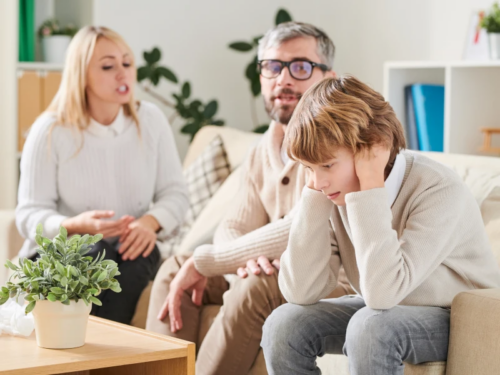
Table of Contents
Everything You Need to Know About Dating Someone With Dismissive Avoidant Attachment

Written By: Alex Bachert, MPH

Clinically Reviewed By: Dr. Don Gasparini
May 10, 2024
5 min.
Forming an emotional connection with a dismissive avoidant partner can be tough. Here’s what you need to know about dating someone with this attachment style.
Learn more about our Clinical Review Process
Table of Contents
Have you ever dated someone who seemed like a great match but started to distance themselves as soon as things became a bit more serious? Starting a new romantic relationship can be scary, and everyone has the right to move at their own pace and comfort level. But for some people, this avoidance or discomfort with emotional intimacy stems from a dismissive avoidant attachment style. Here’s everything you need to know about dating someone with this attachment style, according to a licensed therapist.
Join the Charlie Health Library
Get mental health updates, research, insights, and resources directly to your inbox.
You can unsubscribe anytime.
Sign that you’re dating someone with dismissive avoidant attachment
A person’s attachment style defines how they behave in and around relationships. According to attachment theory, people’s attachment styles are based on their early connections with childhood caregivers. “Dismissive avoidant attachment is one of three avoidant attachment styles. Adults with dismissive avoidant attachment style may avoid close relationships with people in their lives,” explains Shawnna Punteney, MS, LPC, a Charlie Health Clinical Director. “A person with this attachment style may prioritize their independence and autonomy and struggle to connect with others.”

So how can you tell if someone you’re dating has a dismissive avoidant attachment style? One leading sign is that they avoid commitment. For example, an avoidant partner may struggle with making long-term plans, meeting your close friends and family members, or discussing a potential future together. They may also have a history of ending relationships before things get too serious. Other signs that you might have a dismissive avoidant partner are as follows.
1. Strong sense of self
Confidence and self-assurance are typically considered attractive personality traits in a romantic partner. But for people with a dismissive avoidant attachment style, their self-confidence may be a defense mechanism against emotional vulnerability or needing help and support from others.
2. Discomfort with emotional intimacy
People with dismissive avoidant attachment tend to avoid intimacy and emotional closeness. They prefer to engage in short or casual relationships and end things before they get too personal.
3. Communication struggles
Having a dismissive avoidant attachment style can make it difficult for people to communicate with others. Due to their attachment style, they may come off as rigid, intolerant, or closed off. They may even refuse to communicate altogether.
4. Highly independent
People with a dismissive avoidant attachment value their independence, which can leave their partners feeling shut out. It’s common for people with this attachment style to keep their plans and activities private from others, even the people they are dating.
Six tips for dating someone with dismissive avoidant attachment
“Dating a person with dismissive avoidant attachment can present challenges,” says Punteney. But the good news is that attachment styles are not fixed. In fact, they can be challenged and even changed, continues Punteney. Here are several tips for learning to build and maintain a healthy romantic relationship with a dismissive avoidant partner.
1. Research attachment styles
“It is important for couples to identify what their attachment styles are and be honest about what they are looking for in a relationship,” says Punteney. People with a secure attachment style tend to be comfortable with intimacy, practice respectful boundary setting, and know how to navigate conflict with open and honest communication. But people with insecure attachment styles—such as dismissive avoidant attachment, fearful avoidant attachment, and anxious attachment—may require a bit more support and guidance as they work toward a healthy relationship. Everyone is different, so understanding your partner’s attachment style can make a difference in how you connect.
2. Prioritize open communication
“Communication and honesty are crucial in these types of attachment styles as they are most often at odds with each other. While one person is seeking to be extremely close, the other is pulling away due to being triggered by the need for too much closeness,” says Punteney. “The anxious and avoidant attachment styles tend to be the most complicated; however, with therapy and psychoeducation, this can be navigated successfully.”
3. Understand their triggers
“When a person with dismissive avoidant attachment style feels triggered, they may pull away and seek distance. This tends to give them a sense of control that they may not have had in childhood,” explains Punteney. By learning to recognize your partner’s triggers, you can better understand their behavior patterns while preventing future problems. Some common triggers for people with this attachment style include disrespect, clinginess from others, crossing boundaries, lack of validation, and the perception of being controlled.
4. Show compassion and understanding
A dismissive avoidant attachment style is often caused by past trauma, as well as genetic and environmental factors, explains Punteney. Although it can be frustrating to feel shut out by your partner, try to remember that learning to become comfortable with intimacy and connection takes time. A little patience, compassion, and support can go a long way in improving a relationship and reducing emotional distance.

5. Encourage professional mental health support
Many people with a dismissive attachment style benefit from professional mental health support. Working with a therapist who specializes in attachment issues or interpersonal relationships can provide your partner with the tools to better understand the root causes of their behavior. You might also consider couples counseling a valuable resource to help partners find greater intimacy and emotional connection in their relationship.
6. Remember to take care of yourself
Although it's possible to create a better relationship with a dismissive avoidant, it shouldn't come at the expense of your own health and happiness. Don't forget to focus on your well-being while being supportive of your partner. This means practicing self-care, spending time with friends and family, and continuing to check in on your own needs.
Get mental health help with Charlie Health
If you or your partner are showing signs of dismissive attachment style, Charlie Health may be able to help. Our virtual Intensive Outpatient Program (IOP) supports young people with serious mental health conditions, including those stemming from childhood attachment issues. Our expert clinicians incorporate evidence-based therapies into individual counseling, family therapy, and group sessions. This kind of holistic treatment makes managing your mental health and improving your relationships possible. Fill out the form below or give us a call to start healing today.
References





